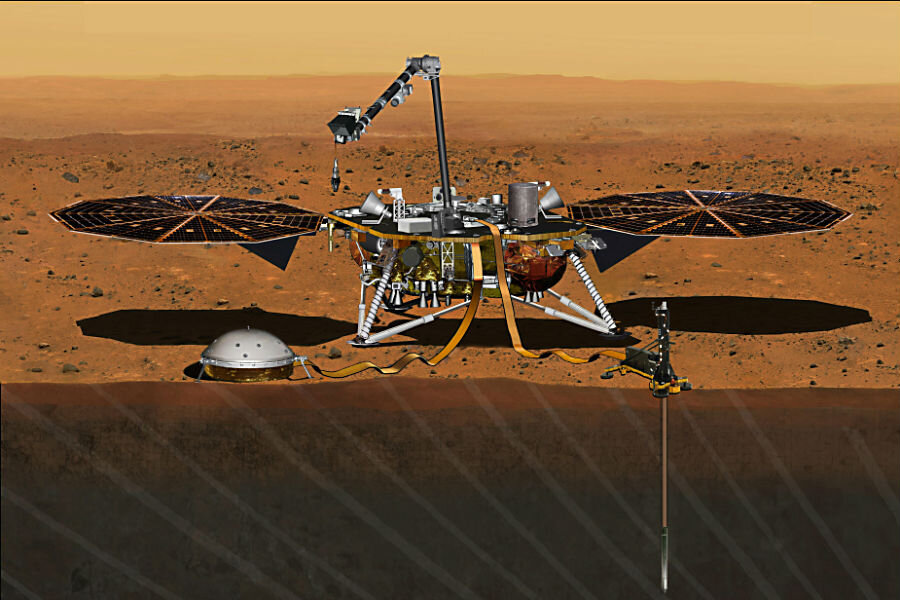After disappointing delay, NASA's next Mars lander set to launch in 2018
Loading...
Following a disappointing delay in December, NASA has revived plans to launch the InSight Mars lander to the Red Planet.
The space agency's InSight mission (short for Interior Exploration using Seismic Investigations, Geodesy and Heat Transport), is still alive, with a targeted launch date of May 5, 2018, according to a release from the National Aeronautics and Space Administration. The window to send craft to Mars opens roughly every two years.
InSight's objectives are to help inform our understanding of the formation and evolution of the terrestrial planets that make up the inner Solar System, according to the space agency. InSight’s lander is equipped with scientific instruments including the Seismic Experiment for Interior Structure (SEIS) that will measure internal activity below Mars’ surface as well as explore the planet’s mantle and crust.
Additionally, the Heat Flow and Physical Properties Package (HP3) will probe up to 5 meters into Mars, hammering a Tractor Mole beneath the surface to measure the planet core heat, and hopefully learn a bit about Martian thermal history. And the Rotation and Interior Structure Experiment (RISE) will use X band microwaves to study planetary rotation.
“The science goals of InSight are compelling, and the NASA and [National Centre for Space Studies (CNES)] plans to overcome the technical challenges are sound,” said NASA Science Mission Directorate associate director John Grunsfeld. “The quest to understand the interior of Mars has been a longstanding goal of planetary scientists for decades. We’re excited to be back on the path for a launch, now in 2018.”
InSight was delayed last year due to a problem with the SEIS vacuum enclosure that would have hindered the seismometer from taking accurate measurements. A redesign of the enclosure by the NASA Jet Propulsion Laboratory (JPL) and tested by CNES will be completed in 2017. NASA has not gauged the cost of the two-year delay and rebuilding process, but it says a price estimate will be figured by August.
“The shared and renewed commitment to this mission continues our collaboration to find clues in the heart of Mars about the early evolution of our solar system,” said CNES’ Marc Pircher, the French space agency’s Toulouse Space Centre director.
InSight will be followed by NASA’s Mars 2020 rover mission, which is set to investigate the Martian environment and potential for habitability. Both projects are stepping stones for the agency’s eventual goal of sending humans to the planet in the 2030s.
While InSight was not able to make use of this year’s opening for a Mars launch, the European Space Agency (ESA) and Russia’s Roscosmos will launch their joint Exobiology on Mars, or ExoMars, mission on Monday from Kazakhstan. ExoMars should reach its destination in October, where its lander will begin searching the Martian atmosphere for gases.








